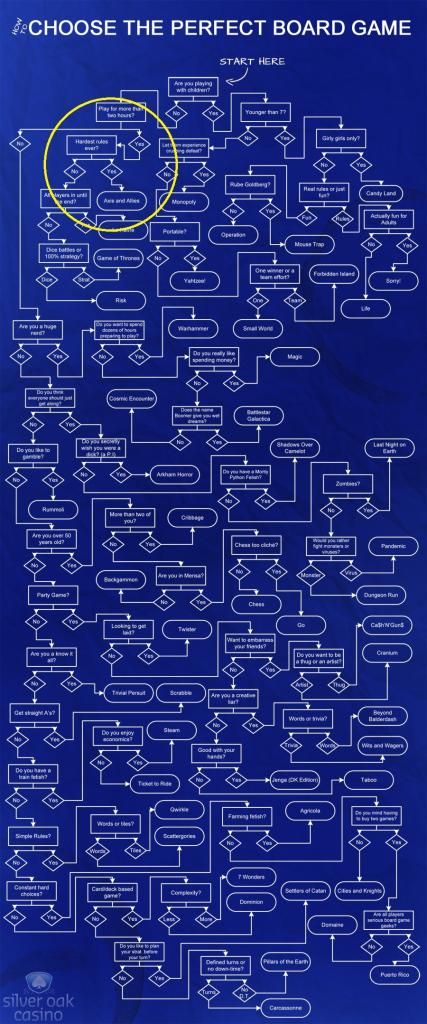Thanks for your post, Der Kunstler, which raises a lot of thought-provoking points about A&A’s status as a board game and about its development over the last 30 or so years. The November 2008 website post from Larry, in which he says he designed A&A with simplicity in mind, is particularly interesting. The question of where to strike the balance between realism and playability is, as you’ve said, an issue that all wargame designers have to deal with, and there’s no single right solution because the answer depends a lot on what the game is trying to accomplish and who the intended audience is.
I don’t own the original 1981 Nova Games version of the game, so I know very little about it, but the Milton Bradley version fits well with the concept of having a fun, fairly simple, easily-playable board game that illustrates (rather than simulates in a strict sense) some of the major elements of WWII. Once that’s been accomplished by a game designer, however, the question becomes where one goes from there.
One option is to have the basic game remain fairly static for the rest of its life. Monopoly and Risk are examples of games that have taken this route. The rules and mechanisms for the basic versions of these games have changed very little over time, as far as I know, and my guess is that someone who played Monopoly fifty or more years ago could sit down in front of the current version of the basic game and start playing right away without having to learn anything new. In the basic versions of such games, the main changes that occur over the decades tend to be restricted to the “chrome”(the design of board, the playing pieces, the cards, the money and so forth), while the engine under the hood stays pretty much the same. There have, of course, been many “brand extensions” of the two games I’ve mentioned, but these have mainly consisted of special editions built around various themes. Monopoly in particular has spun off a plethora of variants (for instance regional and national versions based on places other than the original Atlantic City location), including a deluxe edition in which the properties were priced in millions of dollars and the traditional fake paper money was replaced by an electronic debit card system. Fundamentally, however, most or all of these variants work in the same way as the basic game.
A second option is for a game to be designed as a fairly open-ended system that is infinitely expandable by the addition of extra modules. Memoir 44 would be one example, and the various A&A Miniatures games (land, sea and air) would be another one.
A third option is for a game to evolve into a “product line.” This is the route which A&A has taken so far. We’ve seen several versions of the basic 5-power WWII A&A board game, and we’ve seen several specialized A&A variant board games that deviate from the basic game in various ways. (We’ve also seen the A&A brand applied to collectable miniature tactical games and to electronic A&A gaming systems, but I’m only discussing the actual board games here.) With the exception of Pacific 1940 and Europe 1940, which can be played on their own or combined into Global 1940, all of these A&A board games are self-contained products: many of their sculpts can be transfered from one game to another (as piece junkies like me sometimes do), but their maps and their rules aren’t modular and can’t be combined.
The conventional 5-power A&A global games and the specialized variants have had an interesting relationship because they’re not entirely separate evolutionary branches; they’ve actually influenced each other a lot, in both directions. There have been quite a few cases of new unit types and/or new sculpt designs being introduced in one of the specialized variants, and of these pieces then becoming standard features of subsequent games. A good example is the evolution that took place as A&A progressed from the Milton Bradley version to the Revised version. The Milton Bradley version (1984) was a global game that involved the 5 major powers of the original Nova Games version. It had 8 unit types, colour-coded infantry sculpts with nation-specific designs, colour-coded equipment sculpts with generic designs, and neutral-coloured AAA and IC units with generic designs. It was followed by Europe (1999) and Pacific (2001), the first two specialized A&A variants. They were more limited than the previous games (they were theatre-level games, not global ones, and neither of them featured on its own all 5 of the big powers), but they dramaticaly upgraded the “chrome” elements: two new unit types (artillery and destroyers) and the introduction of non-generic equipment designs (although some designs were used in common by two or more powers). Revised (2004) then took the expanded range of unit types and the upgraded sculpts from Europe and Pacific (in which the US and the UK were the only two powers to appear in both games) and combined them into a conventional 5-power global game.
In terms of the three options I described above, I have no problem with the third-option route that A&A has taken – other than the fact that there currently seems to be a lull in the introduction of new games, and that it’s not clear whether the next developments would be of the conventional 5-power global game type or of the specialized variant type. Would some combination of the first and second options (which I think is along the lines of what Black Elk has proposed) work better? I honestly don’t know; it would depend on the specifics, I guess.








